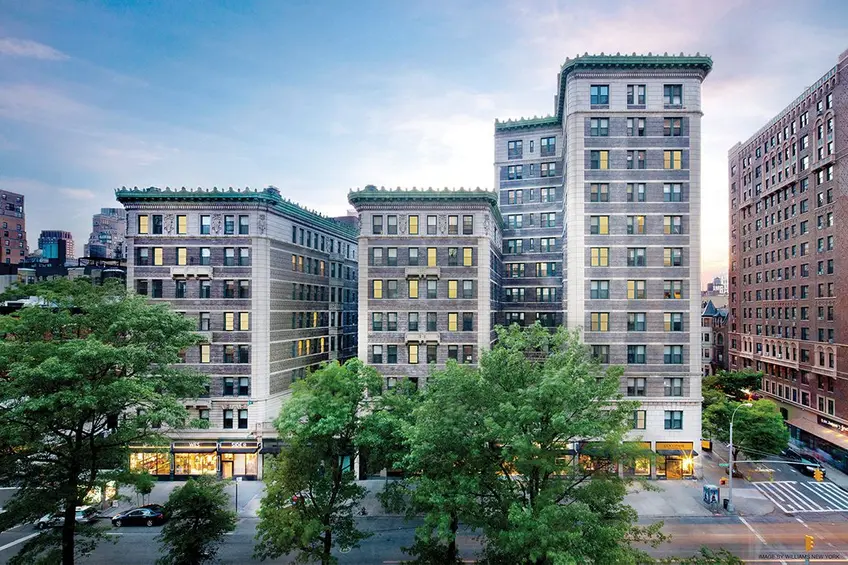 The trio of towers comprising The Astor on the UWS reveals a classic tale of farmland roots turned over to a major landlord.
The trio of towers comprising The Astor on the UWS reveals a classic tale of farmland roots turned over to a major landlord.
The Astor at 235 West 75th Street occupies the entire Broadway frontage between 75th and 76th Streets. This trio of interconnected residential buildings has been an Upper West Side staple since its construction in 1901, so it’s hardly in anyone’s recent memory to recall what came before. We’ve done a little digging to uncover the block’s path through time from untouched farmland to the HFZ Capital-owned development today.
The area above 57th Street traces its roots to the handful of Dutch farming families that purchased it in the early eighteenth century. These neighboring farms were connected to the rapidly developing lower end of Manhattan by the old Native American path known as Bloomingdale Road (dubbed Broadway in 1899).
In this article:
One such piece of land, Somerindyck Farm, stood as a prosperous dairy farm spanning from where present-day Columbus Circle extends to the upper-70th Streets and Central Park extends toward the Hudson River. Situated at where today Broadway and West 75th Street meet, the Somerindyck family’s main house stood almost precisely on the foundation of The Astor.
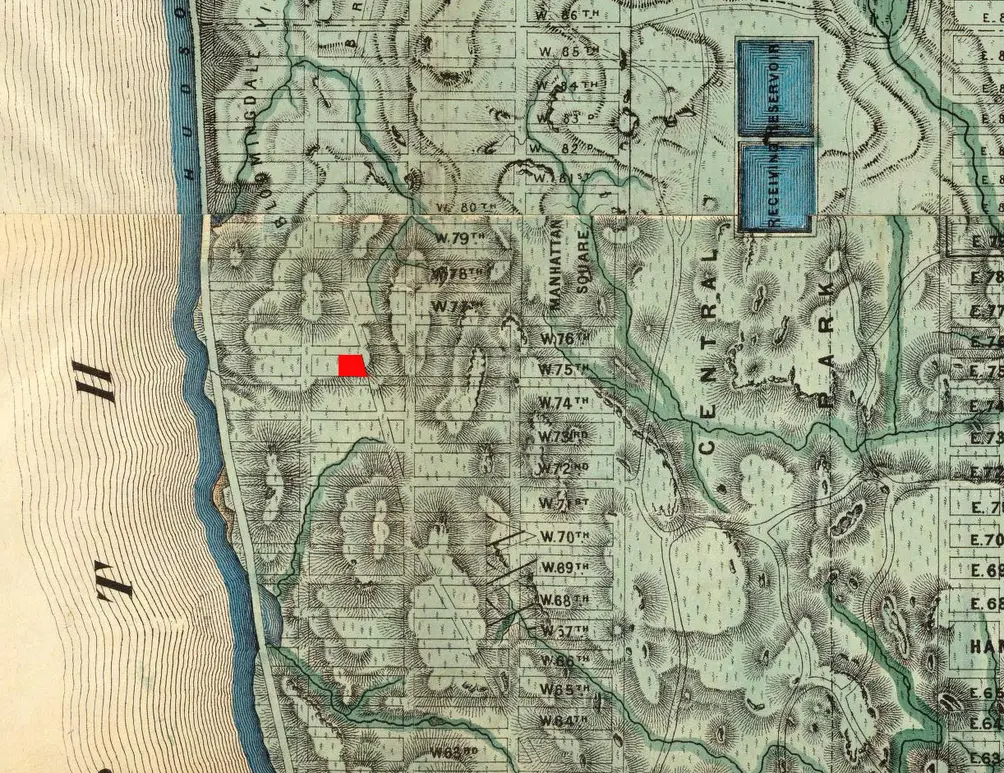 The Astor showin red on the Viele Map 1865
The Astor showin red on the Viele Map 1865
The farm enjoyed an international claim to fame in 1797, when Louis Philippe, the future king of France, lodged in New York City during his time in exile. He taught school at the Somerindyck Estate at Broadway and 75th Streets before returning to France and eventually reigning as king in 1830.
With the debut of Central Park in 1850, increased interest in its surrounding areas led to the sale and purchase of the Upper West Side’s Dutch farms. In 1857, New York State Senator William Kelly purchased the land that previously held the Somerindyck Farm and built his single-family home.
With the turn of the century came the dawn of a great building boom, largely dominated by the Astor family, New York’s most prominent landlords. Supposedly, the family owned 1/20th of the city’s real estate in the year 1890, after John Jacob Astor made his fortune in the fur trade in 1779. Reigning as no less than the first multimillionaire in the history of the United States, he then began increasing his land holdings in New York, starting with a 70-acre farm west of Broadway to the Hudson between where 42nd and 46th Streets stand today.
Quickly becoming the biggest landlords in New York, the family wasted no time in expanding holdings to include the hundreds of acres surrounding Broadway, extending from Wall Street to 150th Street.
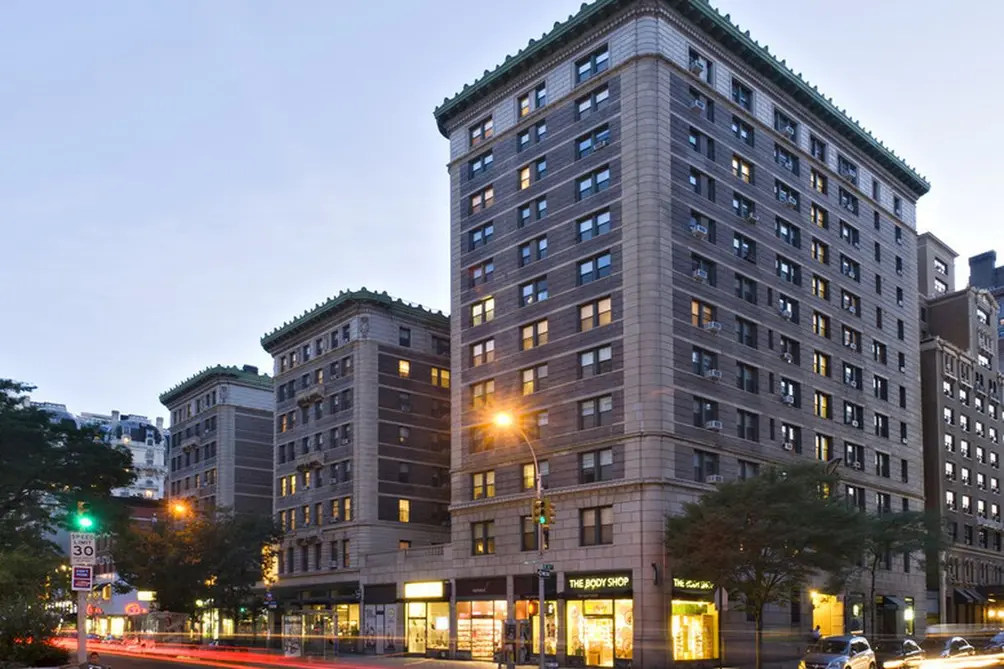 The Astor (HFZ Capital)
The Astor (HFZ Capital)
As timing has it, William Waldorf Astoria acquired Senator Kelly’s land in 1901, demolishing the home and beginning construction on The Astor Apartments. He commissioned Clinton and Russell, popular architects of the time, to design the two southern towers of the Astor. These two connected eight-story structures were completed in 1905.
In 1914, he hired the prominent firm Peabody, Wilson & Brown to complete the project with a third twelve-story tower. This space would accommodate larger penthouse apartments for the increasing amount of wealthy businessman flocking to the Upper West Side, and was completed in just one year.
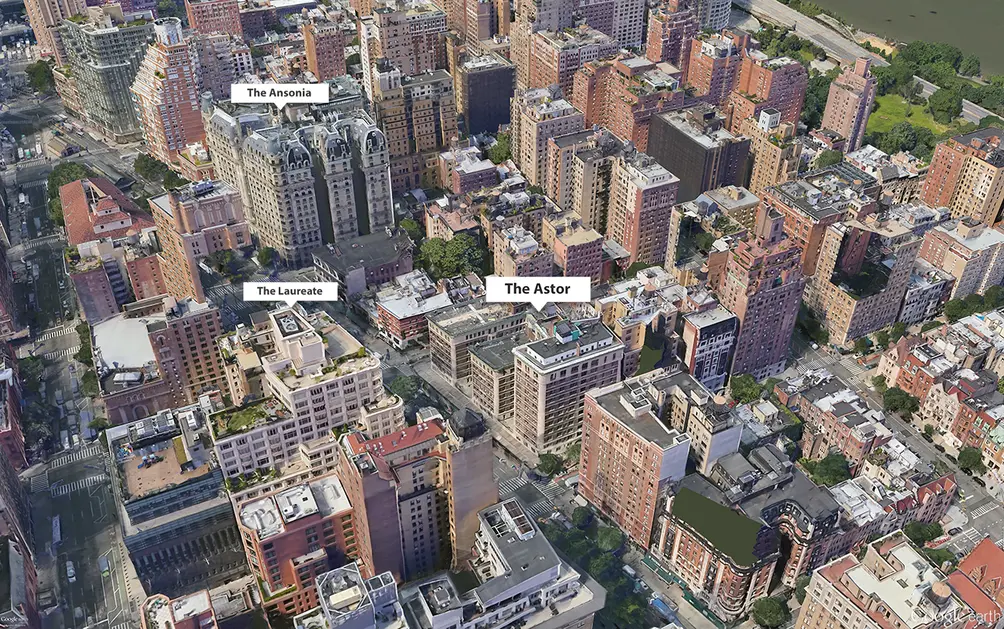 Google Earth aerial showing current area of The Astor (CityRealty)
Google Earth aerial showing current area of The Astor (CityRealty)
Both preceding and following The Astor project is a wealth of both residential and civic structures commissioned by the Astors. Among them are The Astor House Hotel, the city’s first grand hotel; Astor Place, Lower Manhattan’s two-block street commemorating the site of John Jacob Astor’s former home; and the Astor Library, the first research library open to the public; as well as the Waldorf Hotel, the Astoria Hotel, The St. Regis Hotel, The Knickerbocker Hotel and The Apthorp.
In 2015, HFZ Capital moved to restore The Astor, hiring high-end designers Pembrooke & Ives to renovate the buildings and transform them into one classically modern condominium residence. The restored mosaic and stone carved detailed lobby is accented by a curated modern art collection and 24-attended lobby. Family-friendly amenities include a fitness center, a children’s playroom, and a private viewing park overlooking Broadway.
 Children's playroom
Children's playroom
Oriented around three separate wings spaced apart by large bays, each home is infused with natural light. Expansive layouts yield wood-burning fireplaces, molded and beamed ceilings, built-in window seats, and state-of-the-art appliances.
Currently at The Astor, there are twelve apartments for sale, including a one-bedrooms for $1.881 million, a 2-bedrooms for $2.6 million, two three-bedrooms starting from $4.383 million, and eight four-bedrooms starting from $4.5 million. There are also two rentals available, including a two-bedroom for $10,495/month and a three-bedroom for $15,000/month.
Would you like to tour any of these properties?

Contributing Writer
Katy Cornell
Katy Cornell is a Long Island native with a passion for writing about real estate in the big city. She recently graduated from the University of Virginia with a BA in English and is a frequent contributor to CityRealty's Market Insight and NYC real estate blog 6sqft.

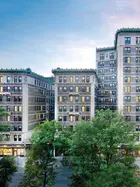
 6sqft delivers the latest on real estate, architecture, and design, straight from New York City.
6sqft delivers the latest on real estate, architecture, and design, straight from New York City.
